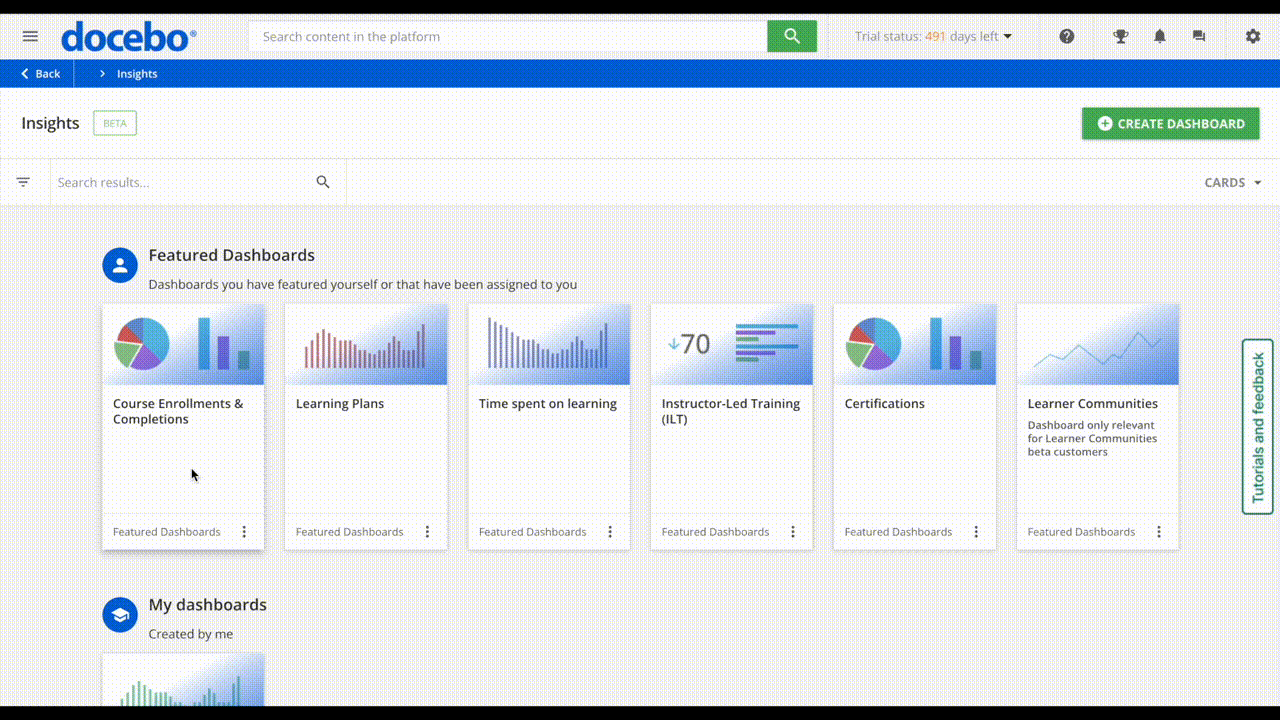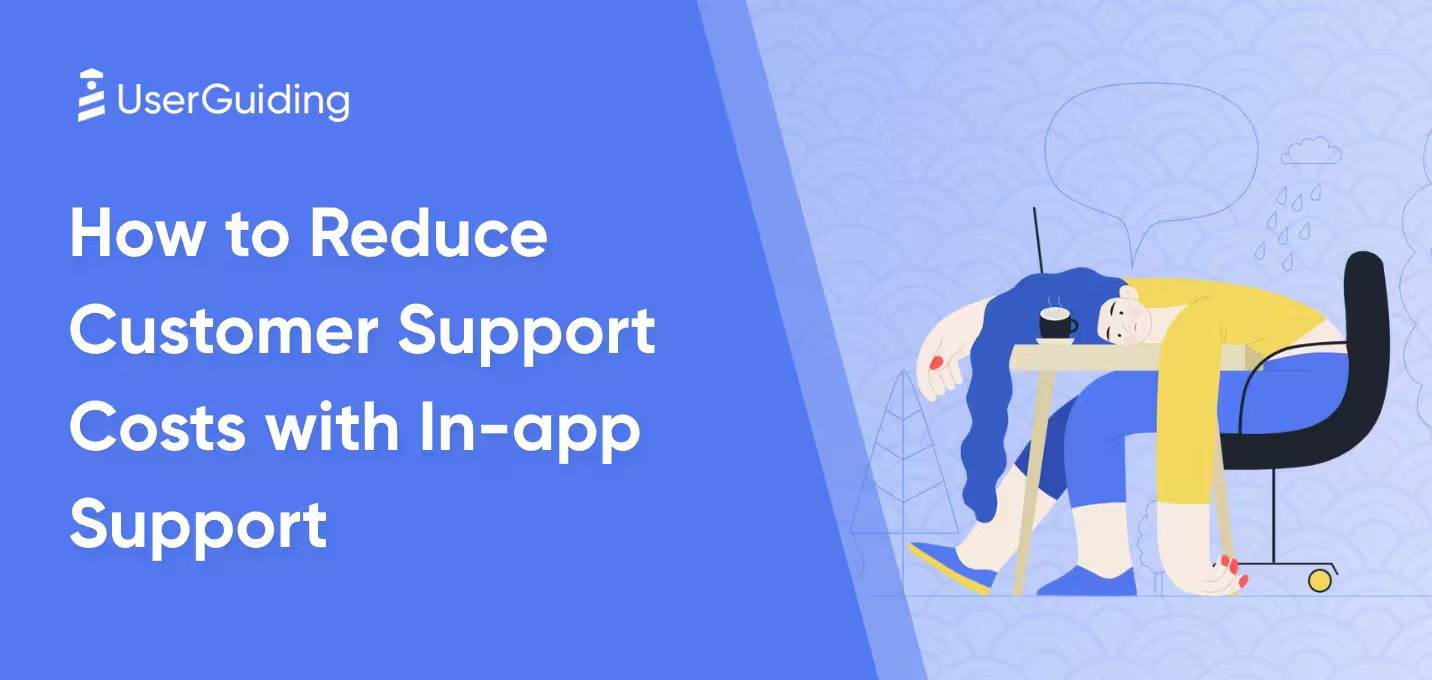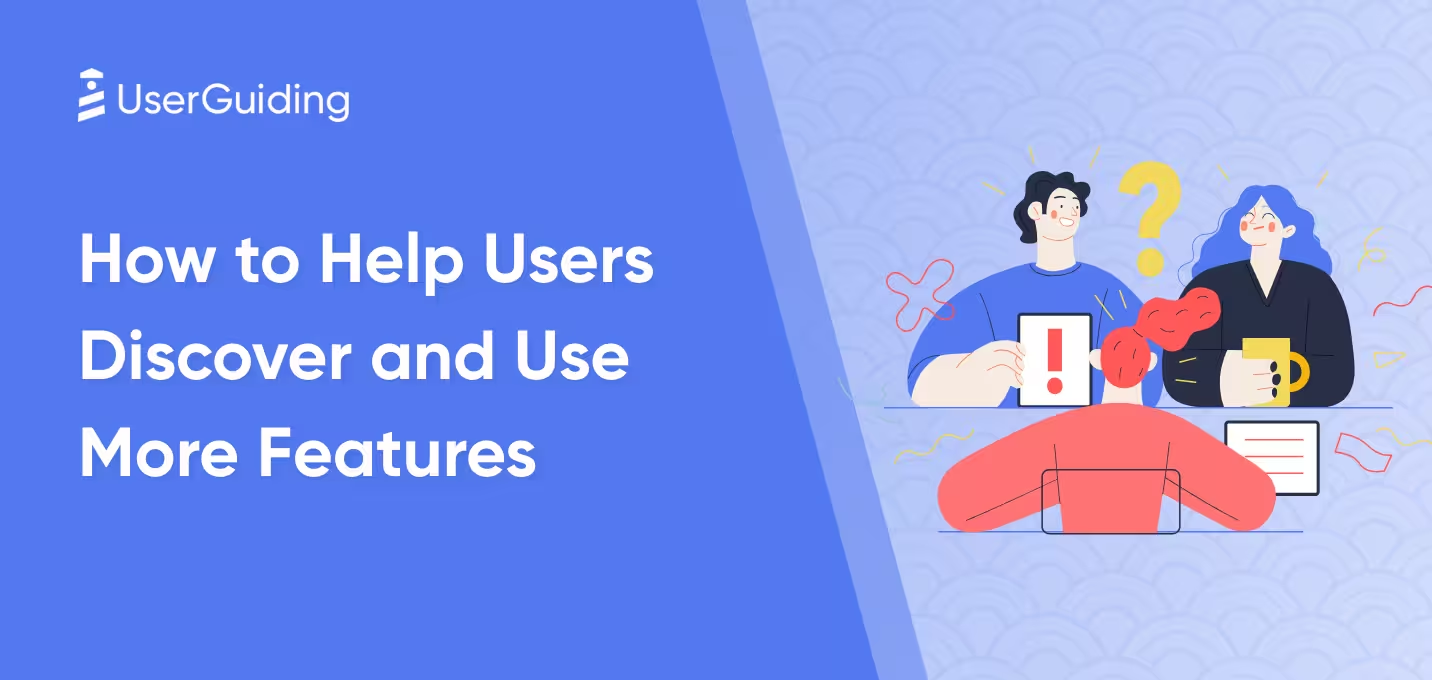

Here’s the deal: If you invest in improving your employees’ skills, you are predicted to get better performance at least 5 times more than if you just rely on hiring for education.
Considering that less than half of the employees (47%) in the U.S. believe that they have the skills they need to be exceptional at their job, there’s a huge gap to be filled between performance and employee training. This includes adopting new technology, too.
Michael Park, a McKinsey leader, signals the future of tech-enabled and personalized employee training sessions:
I think the era of event-based capability building is over. We have to move from, ‘Let’s get everybody into a room and let’s do a snazzy workshop.’ We need to now move to a model where we’re using technology, remote learning, more microlearning than event-based learning, and more simulations that truly immerse the learner as they do their job versus as a separate action.”
In this step-by-step guide, you’ll learn more about how to plan, execute, measure, and optimize employee training for new technology, so your team upskills or re-skills when needed.
TL;DR
- Organizations that invest in employee development see 11% greater profitability and employees can’t upskill without new technology.
- Training employees on new technology helps them get up to speed faster, make sure they use the new tech the way it’s supposed to be used, and cut down on confusion, extra support tickets, and rework.
- Still, employees can be hesitant to adopt new technology for a variety of reasons, including fear or making mistakes, thinking the old way works just fine, losing agency, and not wanting to add more work to their already-full plate.
- To move past this resistance, your training program should be clear about what it entails. You can also give employees incentives to adopt new tech faster and include peer advocates in the program to foster a collaborative environment.
- Designing a new training system is a big task — a task that is often too complex for you to handle alone. That is when third-party tools like LMS platforms, in-app guidance tools, and sandbox environments come in handy. These solutions keep the momentum going and structure the whole plan better.
Why does training matter when introducing new technology?
There’s a reason why “upskilling,” “re-skilling,” and “capability building” have become popular talent development strategies: They improve long-term adaptability, performance, and give rise to innovations.
That’s a win-win for companies.
Gallup reports that organizations that invest in employee development see 11% greater profitability and are twice as likely to retain their employees.
"Training bridges the gap between intention and execution, ensuring teams can adapt as the business evolves. In an era where AI can replace skills within months, investing in learning agility and adaptability is crucial to future-proofing your workforce,” writes Sarah Sedgman, CEO and Founder of LearnExperts, urging companies to not see employee development as “extra cost.”
Besides, the cost of skipping or botching training is much, much higher.
However, adopting new technology isn’t always smooth sailing.
Kate Kellogg, a professor at MIT, and her co-author discovered that introducing new technologies disrupts the workplace hierarchies, and creates friction between juniors and seniors.
In digital advertising, for instance, junior people often have more technical knowledge of how to place ads than their managers do. In law firms, you see new hires who more capably use AI to get legal work done than partners."
To avoid such a clash, Kellogg recommends careful attention to how these technologies are introduced and specifically, how training takes place. Eliminating this friction also means gaining a competitive advantage over those who fail to create a creative, collaborative environment to nurture team spirit.
Why is training employees on new technology critical for success?
Many agree that training employees is important but only few understand why it’s worth it. Here are 5 main reasons why employee training is more than a “nice extra”:
✅ Help employees get up to speed faster: With the right training, they can start using the new tool confidently and become productive much sooner.
✅ Make sure people actually use the tool the way it’s meant to be used: This helps your team get the full value from the technology instead of only tapping into a few features.
✅ Create smoother, more consistent workflows across teams: When everyone follows the same processes, collaboration becomes easier and mistakes drop dramatically.
✅ Cut down on confusion, extra support tickets, and rework: Giving employees the skills they need from the start prevents frustration and saves time for everyone.
✅ Avoid the high cost of skipping training: When teams don’t get proper guidance, you see resistance, tool abandonment, and wasted software spend. This makes it harder to hit digital transformation and efficiency goals.
Preparation phase: Before training begins…
Before you can talk about the hidden ROI of employee training and 800% more productivity from top performers, you need to lay the groundwork for adoption. After all, all good training starts before the first session.
Here are some steps you need to plan in detail before the big change:
Spot what each team needs help with
McKinsey reports employees are 22% less productive when they don’t have the right skills to do their jobs, which puts roughly $480 million of annual revenue at risk for a median-sized company.

To get ahead of this problem, you need to understand employees’ current capabilities and where they need help.
Start by conducting a thorough needs analysis to identify specific skills and knowledge needed for successful technology adoption across different roles. Hands-on workshops, interactive modules, and personalized coaching might be helpful at this stage.
Keep in mind that intentional training is slow while technology moves fast. That is why industry professionals advise to “start small, build big, and constantly evolve.”
Set simple, measurable goals so everyone knows what “success” looks like
Clear goals make the whole new technology rollout feel more organized and less chaotic. When people know what they’re aiming for (like mastering core software tasks or hitting a certain usage level) it becomes much easier to stay focused.
These metrics also give you a way to track progress and course-correct if something isn’t landing. It turns training into a shared target rather than a vague expectation.
Choose go-to teammates who can guide and support others
Every team has people who naturally pick things up quickly. And these are your internal champions.
Their support becomes even more valuable as organizations emphasize internal mobility; in fact, 54% of Learning and Development professionals say it has become a higher priority since COVID-19.
When these go-to teammates help others learn new tools, they strengthen their own skills while lifting the entire team. This peer-led approach builds confidence and keeps momentum going long after the initial training.
Share updates early so people feel informed, not blindsided
Nobody likes sudden changes at work, especially when new technology is involved.
Communicating early helps employees understand what’s coming and why it matters. It builds trust, reduces resistance, and sets the tone for a smoother transition.
When people feel included in the process, they’re far more willing to embrace the change.
How to design a training programme that fits different roles and learning styles
“How can I design an inclusive, multifaceted training program?”
It’s a question that gets asked a lot. Unfortunately, it’s a question that doesn’t have a single, clear-cut answer.
Fortunately, this means that you can experiment and create a program that fits your needs.
Still, it can still be overwhelming to find a starting point. To make things easier on your team, we’ve created a checklist that will walk you through all the essential elements of an employee training program. Keep reading!
📝 Create role-based training paths: Support, sales, ops — everyone uses the same tool differently, so they shouldn’t all be stuck with the same training. Give each team what they actually need instead of drowning them in irrelevant details. When training feels tailored, people stay engaged and pick things up way faster. Plus, they immediately understand how the tool makes their day easier.
📝 Combine different formats: Don’t rely on one format and hope for the best. Mix e-learning, guided walkthroughs, live sessions, microlearning, and quick, mobile-friendly lessons so people can learn however (and wherever) works for them. This keeps things fresh instead of feeling like one long lecture. It also helps learners absorb information from multiple angles.
📝 Make training interactive: No one wants to sit through passive, endless instructions (especially with new tech). Bring in scenarios, practice tasks, quizzes, and in-app exercises so people can actually do the thing while they learn. Remember the IKEA effect? When people build or try something themselves, they value it more and feel more confident using it. The more hands-on your training is, the smoother the rollout will be.
📝 Plan for accessibility and scheduling flexibility: Your team isn’t all sitting in the same room anymore, and training shouldn’t assume they are. Make everything accessible (captions, transcripts, screen-reader-friendly formats) so no one gets left out. And offer flexible, asynchronous options so remote and hybrid employees can learn without having to juggle time zones or drop everything for a live session. When training fits people’s lives, they’re far more likely to complete it and actually enjoy it.
Implementation and roll-out phase:
You’ve laid the groundwork and now it’s time to roll-out your training program. Of course, it’s both exciting and nerve-wrecking. To ease out some of the stress, break down the process into manageable, bite-sized bits.
Here’s how you can approach this phase:
Start small, use feedback to adjust content
Start small before you roll the training out to everyone.
A pilot group helps you catch confusing steps, missing context, or anything that sounds brilliant in theory but falls apart in real workflows. And here’s the big kicker: McKinsey warns that a lot of digital initiatives flop because teams either go too tiny (“let’s test one or two use cases forever”) or spread themselves way too thin across dozens of disconnected efforts.
Successful companies zoom in on a few meaningful areas and transform them end to end — so think of your pilot as the first focused “bite”, not a watered-down appetizer. With tight scope and real feedback, your full rollout ends up sharper, smoother, and actually valuable.
Compare phased roll-out vs. full roll-out
You don’t have to go all-in on day one.
A phased rollout works great when the tool introduces big workflow changes or when teams need extra time to adjust. A full rollout makes sense when everyone has to switch at once like replacing an old system with a hard deadline.
Choose the approach that matches your team’s reality, not the one that just “sounds efficient.”
Provide support during roll-out
When people start using a new tool, questions pop up fast (and often).
Make the transition easier with office hours, peer support, and quick check-ins from super users who know the ropes.
This gives employees a safe place to ask the “Is it just me…?” questions without feeling stuck or embarrassed. The more supported they feel, the faster adoption clicks into place.
Show how to embed training into everyday work
Training shouldn’t be a one-and-done event that everyone forgets next week.
Build learning into daily workflows with in-tool guidance, helpful prompts, and bite-sized reminders that show up exactly when people need them.
A recent Columbia University study on AI adoption even found that employees rely far more on trial and error and peer learning than traditional, structured training.
In other words, meet people where real learning actually happens: right in the flow of work.
How can you handle common challenges and change resistance?
There are three archetypes of employees who resist new technology at the workplace:
- The Paralyzed Perfectionist: This person is so afraid of making mistakes with the new tool that they’d rather not touch it until they feel “100% ready” (which, spoiler, never happens).
- The Comfort-Zone Loyalist: They’ve been using the same workflow since dial-up internet, and they’ll cling to it with both hands because “the old way works just fine.” They also fear they’ll lose agency after adopting a new system (in true Severance style no less).
- The Already-At-Capacity Skeptic: This person isn’t exactly anti-tech. They’re anti-“one more thing on my plate.” If a rollout feels like extra work on top of their full workload, they’ll drag their feet hard.
Interestingly, each type thinks their problem can’t be solved.
But once you test and “perfect” your training formula, the fix is pretty straightforward: leadership and support for those who move at different speeds.
To achieve that, you should clearly communicate what the training program entails: How much time will it take? How does the new technology align with business outcomes? How is it better than the current technology your team is already using? What do you expect from each team member during the training? How will you measure success? What adjustments are you going to make to ensure that the training will not eat up the time usually set for daily tasks?
The more details you give, the better the employees will understand why new technology adoption is needed at this moment.
Some employees can still be hesitant. That’s where incentives come in. Even a verbal recognition can go a long way to show support for early adoption and proficiency (But we recommend tangible awards like bonuses, gift cards, etc.).
Peer advocates are another way to move past resistance. Most successful transformations lean into leadership that encourages experimentation, rapid prototyping, and learning from failure. Paired with peer-led check-ins, this strategy creates a safe place for people to ask questions and grow.

To support learners who move at different speeds, give them multiple “on-ramps”: quick-start guides for the fast movers, deeper walkthroughs for the slow burners, and optional practice labs for everyone in between.
And because engagement always nosedives after the big launch-buzz fades, keep the momentum alive with fresh scenarios, monthly micro-challenges, and quick wins people can actually feel in their day-to-day.
Most importantly, treat training like a living program (not a one-and-done event) so employees keep building confidence long after the confetti has settled.
How to measure adoption and training effectiveness
Your training is up and running. The new technology adoption plan is moving steadily. But there’s one thing left: How will you know if it’s actually working?
There are a myriad of ways to test the effectiveness of your system, but here are four that we find that get the job done best:
✅ Use metrics to quantify: Track the right metrics by watching active usage, feature adoption, time to competency, and support ticket volume so you can see what’s actually sticking and where people get stuck.
✅ Integrate pre- and post-training assessments: Run pre- and post-training assessments to measure real confidence and skill growth, not just completion rates.
✅ Pay attention to dashboards and analytics: Use dashboards and analytics to spot drop-off points, underused features, and teams that need extra support before small issues snowball.
✅ Reiterate regularly: Keep iterating because training isn’t a single milestone. It’s an ongoing cycle of tweaking, refreshing, and leveling up as your people (and your tools) evolve.
Encouraging a culture of continuous learning
As we’ve mentioned multiple times in this post, it’s important to adopt a mindset of ongoing improvement when it comes to employee training for new technology.
Nimmi Roche, Head of Consumer at Existence, offers a good perspective: “Leaders focus on integrations and timelines. Employees focus on one question: What does this mean for me?”
To get to the point of continuous learning as part of company culture, you need to give employees tools they can work with:
- Build a home base for all your how-tos: Give employees one easy place to find answers so they don’t waste time hunting through docs, Slack threads, or old emails. A clean, well-organized knowledge base becomes the “source of truth” everyone can trust. It also reduces repeat questions and helps new hires ramp up faster.
- Make peer-to-peer help the norm: People learn faster when they can ask a coworker who’s already figured things out. Creating community-style help channels makes troubleshooting feel lighter and more social. Plus, it builds a culture where sharing knowledge is just part of how the team works.
- Offer “level-up” sessions for your power users: Once employees master the basics, advanced workshops keep them growing instead of plateauing. These short “level-up” sessions turn confident users into true specialists. They also help your organization tap into more features you’re already paying for.
- Train today with tomorrow’s tools in mind: Technology changes fast, so your training should prepare people for what’s coming — not just what’s here today. Forward-looking sessions build digital confidence and reduce panic when new tools arrive. Over time, this mindset helps your organization stay adaptable instead of reactive.
What are the tools and platforms that enable smooth technology training?
You can’t do the technology training alone.
Way too many steps and you lose momentum. Forget interactive elements and chaos follows. Miss an essential feature of the new tool, the whole training falls apart.
That is why a third-party tool becomes the difference between a good training plan and a great one.
We’ve gathered a short list of tools that might be helpful (with some notable mentions as well). Check them out:
LMS platforms for structured learning
A solid Learning Management System (LMS) gives your training program structure, clarity, and repeatability: three things every technology rollout desperately needs.
Docebo is especially strong here, offering:
- customizable learning paths
- built-in assessments
- analytics that show exactly where learners are thriving or getting stuck.

It helps you create role-based journeys so a support rep, a sales manager, and a new hire aren’t all dumped into the same generic “how this tool works” module.
This kind of structure is essential when you’re training multiple teams with different workflows and expectations. Instead of one-off sessions that disappear the moment the meeting ends, Docebo gives people a central learning hub they can revisit anytime.
👉 Other notable mentions: TalentLMS, LearnUpon, Lessonly.
In-app guidance tools
In-app guidance tools meet employees exactly where learning happens: inside the software itself. Instead of juggling a how-to doc in one tab and the new tool in another, people get step-by-step prompts right on top of the interface.
UserGuiding overlays step-by-step walkthroughs, tooltips, onboarding checklists, and interactive guides right on top of your product, so employees can learn by doing instead of toggling between instructions and an unfamiliar interface.

This “learn in the flow of work” style dramatically reduces confusion and lowers the mental load that comes with adopting something new.
It also speeds up time-to-proficiency because users get help right at the moment they need it, not a week later in a classroom. For teams with tight schedules or low technical confidence, this kind of real-time guidance removes roadblocks before they turn into support tickets.
Over time, UserGuiding's analytics tell you which features employees struggle to understand, helping you refine your training program with data instead of guesses.
And because the guidance is embedded, employees can revisit steps as often as they need without feeling overwhelmed or embarrassed.
👉 Other notable mentions: Pendo, WalkMe, Appcues, Userpilot.
Micro-learning platforms for reinforcement sessions
Micro-learning is ideal for reinforcing new behaviors without overwhelming employees and Axonify is one of the best platforms for making it stick.
It delivers training in short, focused bursts that fit into the natural rhythm of the workday, so people can pick up new skills without blocking off an hour or losing momentum. This is perfect for post-rollout reinforcement, when the initial excitement fades and daily habits actually need to take hold.

Axonify’s adaptive learning engine tailors lessons to each employee’s needs and gives extra support where someone struggles and accelerates learning when they’re ready for more.
It also makes repetition feel less tedious and more rewarding, which is key for long-term retention. And since everything is trackable, L&D teams can see what’s working, where engagement dips, and which skills need another round of reinforcement.
👉 Other notable mentions: 7taps and EdApp.
Now, let’s talk about optional advanced tools:
Simulations and sandbox environments
Simulations and sandbox environments let people learn through exploration, experimentation, and good old trial-and-error without the risk of breaking something mission-critical.
Assima is built for exactly this: it creates high-fidelity simulations of your tools so employees can practice real workflows in a safe, controlled environment.
Instead of passively watching a demo or guessing their way through their first attempt, users can navigate actual tasks, make mistakes, and try again until the process feels natural.

Simulations also help managers pinpoint tricky steps, common misconceptions, or areas where training needs tightening before live rollout.
For complex tools, multi-step processes, or enterprise software, sandbox environments are one of the most realistic ways to build confidence and competence. And if you’re doing a phased rollout, you can test training with a smaller group first, refine it, and launch at scale with far fewer surprises.
👉 Other notable mentions: Cloud Academy Labs, Skillable, ReadyTech, Whatfix Mirror.
Case example: RAM’s technology adoption
RAM is a South African courier company with over 40 branches and 1000 vehicles. When the leadership decided that it was time to digitally transform the company, the IT department became one of the first spots to start that change.
Adopting the new tech was fairly easy for management and upper-level employees. The real challenge was helping couriers and branch managers adopt it as efficiently.
And this was a task too large to be handled in-house. They needed another solution, a solution that would:
- train new and existing employees as quickly as possible
- help employees adopt faster without disrupting their day-to-day schedules
They chose UserGuiding to take on this challenge. With UserGuiding, RAM was able to:
- create a step-by-step walkthrough with a personalized character (Sam from RAM) to explain the new platform and its features
- introduce an adoption checklist with a progress bar
- use interactive elements like hotspots and tooltips for contextual self-help
Integrating UserGuiding helped RAM eliminate the confusion and complication that comes with in-person training and gave employees more chances to engage with new technology.

Conclusion and next steps
At the end of the day, successful technology training isn’t magic. It’s a mix of smart planning, role-based paths, and ongoing reinforcement.
When employees feel supported at every step, adoption stops being a struggle and starts becoming part of how your team works.
If you're ready to tighten up your rollout, request a demo today.
Frequently Asked Questions
How do you introduce new technology to employees with minimal resistance?
Communicate early, explain the “why,” and show how the tool makes their work easier. Pair that with role-based training and support so the change feels helpful, not disruptive.
What does an employee training plan template for rolling out new software tools include?
It typically covers learning objectives, role-based training paths, timelines, support resources, and success metrics. It also outlines who’s responsible for delivering training and how progress will be tracked.
How do you measure the technology adoption rate after employee onboarding?
Track metrics like active usage, task completion rates, and how often employees use key features. Compare these numbers to your expected benchmarks to see if adoption is on target.
What are the role-based training approaches for new technology implementation?
Create tailored learning paths based on each team’s responsibilities and the specific tasks they’ll perform in the tool. This ensures employees only learn what they actually need and reduces overwhelm.
What are the best practices for training non-technical employees on new systems?
Use simple language, hands-on exercises, and real-world examples they recognize. Break content into small steps and provide ongoing support so they can learn at their own pace.
What are the most effective in-app guidance tools for employees onboarding to new technology?
Tools like UserGuiding, Pendo, WalkMe, and Appcues offer step-by-step walkthroughs and tooltips inside the product. These guides help employees learn by doing, right within their workflow.
What are the most efficient microlearning strategies for faster technology adoption at work?
Deliver short, focused lessons that teach one task at a time and can be completed quickly. Combine these with in-tool prompts or reminders so learning happens exactly when employees need it.
How do you select internal champions for new technology rollout?
Choose employees who learn quickly, communicate clearly, and are trusted by their peers. Look for people who are enthusiastic about the new tool and willing to support others during the transition.
How do phased rollout and full deployment for new employee tech training compare?
A phased rollout introduces the tool in stages to reduce overwhelm and gather feedback early. A full deployment works best when everyone must switch at the same time or when workflows are tightly connected.
How do you track time-to-proficiency during new technology onboarding?
Measure how long it takes employees to complete core tasks without assistance. Compare progress across teams or roles to identify skill gaps and adjust training where needed.

















.svg)
.svg)
.svg)
.svg)
.svg)

.svg)
.svg)












.svg)
.svg)




.png)















